

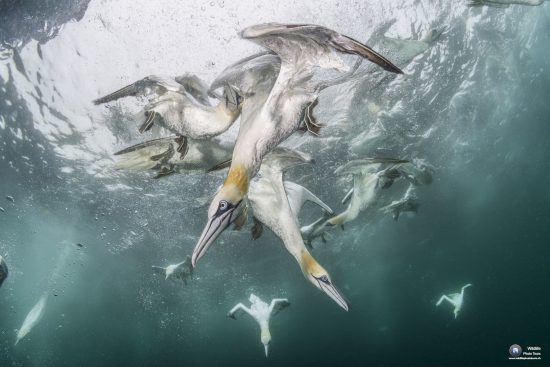
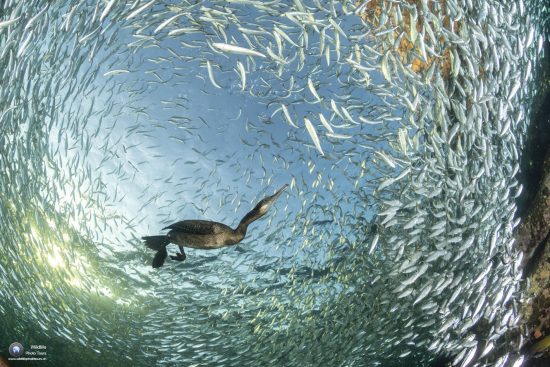
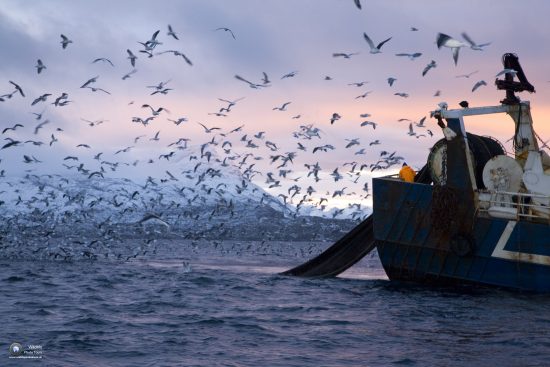
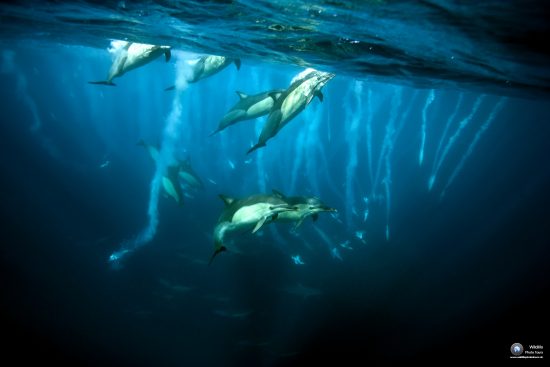
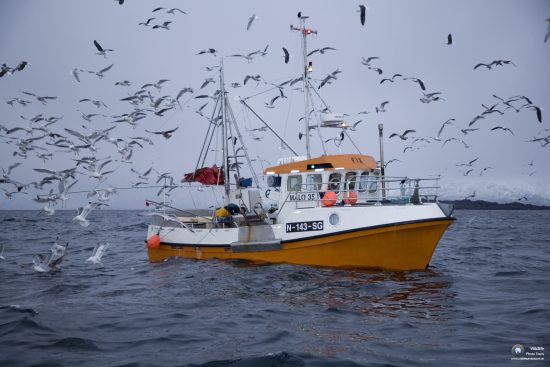
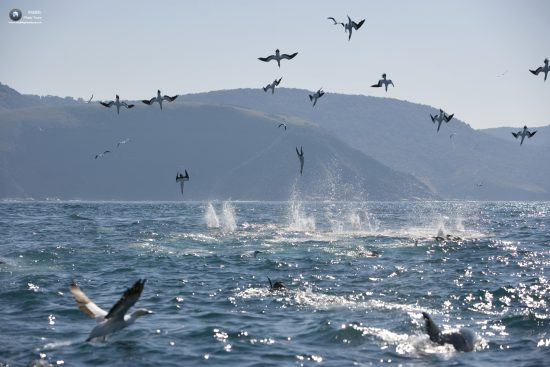
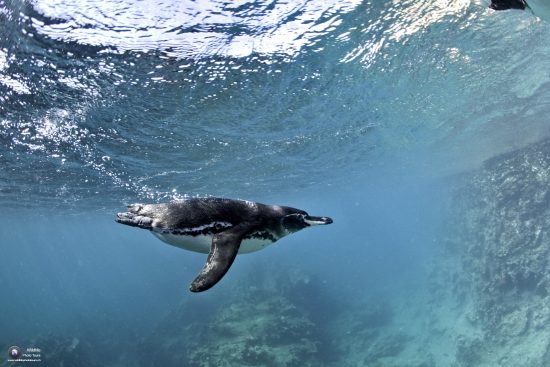
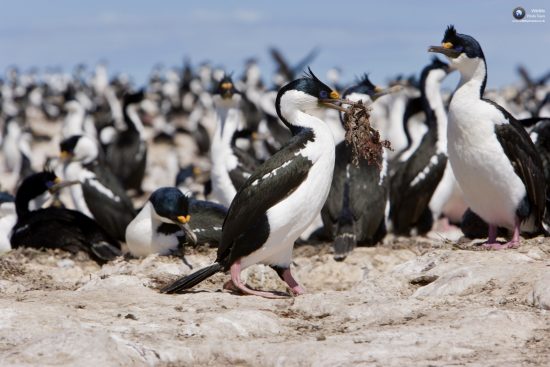
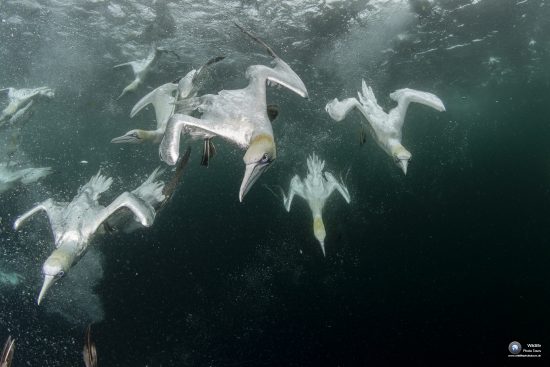

Have you ever had a flock of marine birds as dive buddies? It's definitely an unusual situation. They pierce the water's surface at incredible speed, releasing streams of microbubbles from their wings, thus reducing water friction as they look for fish with their eyes wide open. They look like extreme freedivers, with a natural ability to hold their breath underwater while they chase and catch their prey.
Brown pelicans of the eastern Pacific, cormorants and gannets “swim” very well below the surface, using their large wings to propel themselves in the right direction as they chase bait balls of sardines. Their diving ability allows them to compete with ocean predators for food. During the South African or Mexican Sardine Run, it is common to see gannets, pelagic fish like marlins, bonito or sharks, dolphins, sea lions and sometimes whales, in the same frame.
Different predators may have different needs, but they all need to breathe. There are no absolute scientific certainties, and even though the data is estimated, it is astonishing. Understandably, the estimated mass-specific volume of usable oxygen stores varies greatly between species, but even the lower of these values (approximately 33 ml kg) is impressive when compared to humans, where usable oxygen stores are approximately 20 ml kg. The respiratory system of most aquatic birds contributes 35–60% of the usable stores. Of course, prey quality, density, distribution and vertical location in the water column can all influence diving behaviour and, therefore, the energy cost of foraging.
Like spearfishers, marine birds engage in diving cycles: they spend time at the surface replenishing oxygen stores, time travelling to and from the underwater foraging site, and time at the foraging site. In addition, they need to employ anti-predator behaviours to reduce the probability of encountering or being captured by a predator, increasing their level of vigilance and foraging in a way that minimizes danger.
Northern gannets are unbelievable in mastering all this and making it look easy. They seem equally at home in both air and water and, when the moment is just right, they turn their flight downward like arrows. They are sharp in every respect, with a heavy, sharp bill,
pointed tail, and long slender wings. They fold their two-metre-long wings in at just the last moment, transforming their bodies into darts, piercing the water's surface. A gannet's dive may be relatively shallow, or as deep as 20 metres, chasing prey.
They have excellent vision and are able to detect prey underwater amid the reflected and refracted light where water and air meet. Their eyes have special structural adaptations for plunge-diving. Their velocity can carry them 5 metres below the surface of the water, and they can swim an additional 15 metres to hunt prey. They then return to the surface helped by tiny air-bags stored among skin and feathers.
They swallow fish while still underwater instead of surfacing and carrying it away. They are known to follow fishing vessels (like other marine birds) to pick up any discarded fish left behind by fishermen. If you want to observe them underwater, it is worth building a good relationship with the owner of a fishing vessel.
Polygon 80/65 - Jacket and Pants: With a thickness of 8 mm on the chest and arms, and 6.5 mm on the forearms and hood, this wetsuit kept me warm in the cold water and allowed me to swim and move freely.
X-Wing C-S fins: With their small dimensions, they were simply perfect.
 Franco and Sabrina
Franco and Sabrina 14th October 2024
14th October 2024